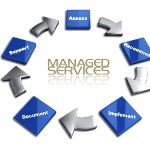At Christmas Time, people are looking to give presents that are practical. Those who are tech savvy know that some of their friends who also tech savvy would like to have a new computer under the tree this Christmas.
Note: Every Four Years is the usual point in time that you should look into purchasing a new computer. By this time, the current operating system has had many service packs and updates and sometimes this will slow down the performance of the computer, whether it is a laptop or desktop. Also, viruses and/or malware can cause damage to the operating system, requiring a complete system reload. If you are at the four year mark, you might want to consider upgrading.
Here some things to look for when purchasing a new computer:
CPU Speed: The Central Processing Unit is the “brains” of the computer and is in charge of how much data flows through the unit. The slower the CPU, the slower the data flow. Many times CPU bottlenecks of older systems prevent the unit from operating at an optimum level.
Hard Drive: The hard drive is where the operating system, programs and data reside on (unless the data is saved and backed up elsewhere). An older hard drive that uses platters for reading and writing data to it will be slower than a later model solid state device. Newer hard drives have very fast access speeds compared to older units.
Memory: Random Access Memory (RAM) determines how quickly the operating system, programs and data loads into the “memory” of the computer. Later model computers can handle and usually have greater amounts of memory to facilitate more robust computer operations.
System Board: The system board (otherwise known as the “motherboard”) will have different components on it (cache, chipset, etc.) that will help the computer to run more smoothly and efficiently. The newer the board, the better.
IT Security: Security for the computer(s) is of the upmost importance. Having the right security measures in place is absolutely necessary, especially with the rise of Ransomware. This includes Windows 10 being the dominant operating system.
These are the different items to look for when purchasing a computer. The operating system and applications always will run better on a newer system. Also, you can take advantage of newer programs (both cloud and non-cloud) that will work better on a newer system as well. Please let us know if you would like to speak to someone about recommendations for purchasing a laptop or desktop.
When purchasing or upgrading a computer be sure to get best deal you can get from the store (in-store or online). Also, you may want to get an extended warranty for the unit as well if it is in your budget to do so.
If you would like to know more, please contact us at 1-800-871-9683 for a free consultation. Also, if you still have Windows 7 or 8 Computer(s) in your business, please give us a call to help you upgrade to Windows 10 and Office 365. Our email address is: markhuffman@creativebusinesstechnologies.com




